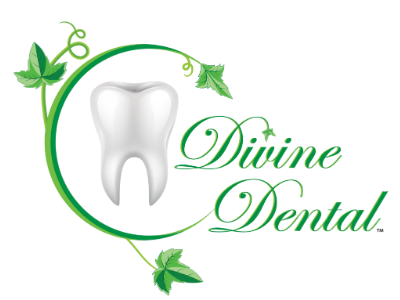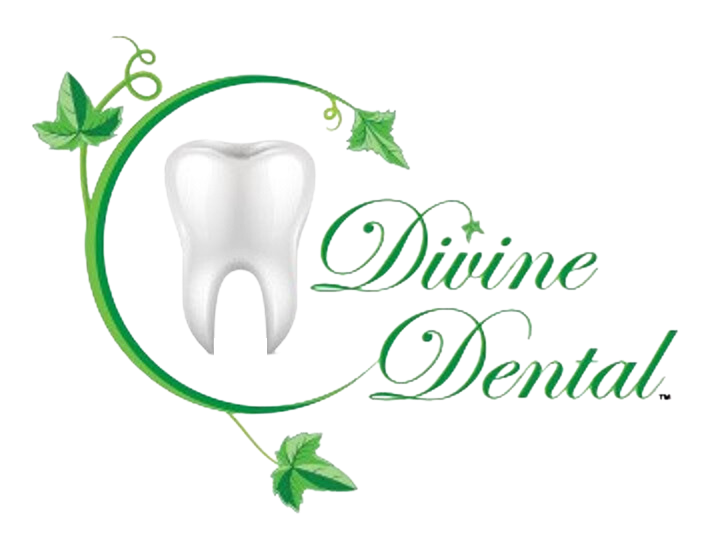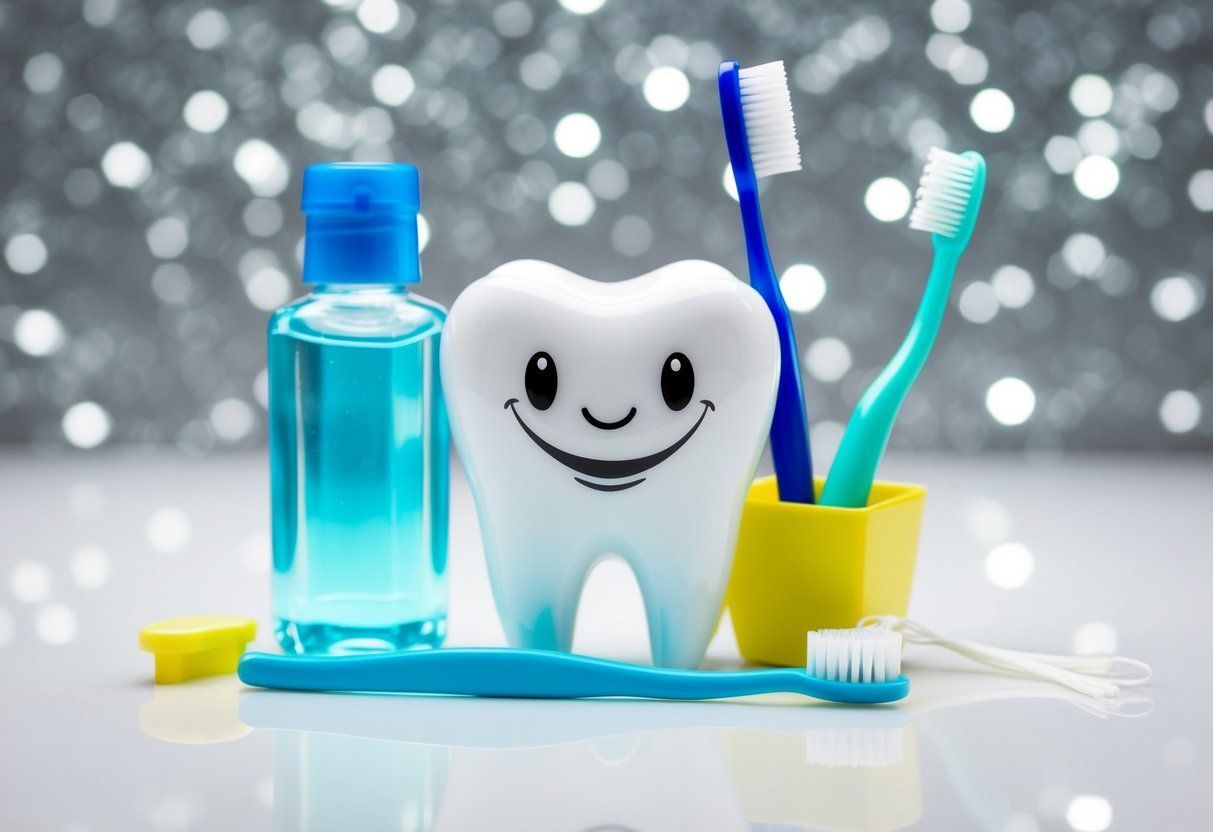Emergency Dentistry Services: Quick Response for Urgent Dental Care Needs
Emergency dentistry services are a critical aspect of dental care, providing immediate attention for patients experiencing severe pain, discomfort, or trauma to the teeth and gums. Unlike routine dental appointments, emergency dental services are geared towards addressing urgent issues that cannot wait for a scheduled visit. When facing a dental emergency, accessing timely and effective care is essential to alleviate pain, prevent further complications, and ensure the best possible outcome for oral health.

Dental emergencies can arise from a variety of situations, such as accidents leading to broken or knocked-out teeth, infections causing severe pain , or complications from previous dental work. These unexpected issues require swift action, and emergency dentists are equipped to handle a range of urgent dental problems. They offer various services, from managing acute pain to performing complex procedures, and play a vital role in providing relief and preserving patients’ oral health.
Key Takeaways
- Emergency dentistry provides prompt care for unexpected dental issues, ensuring swift pain relief and problem resolution.
- Access to emergency services is crucial for addressing severe dental emergencies that could lead to further health risks if left untreated.
- Patients can expect comprehensive care, including immediate procedures and follow-up advice for post-treatment recovery and maintenance.
Understanding Dental Emergencies
Identifying and addressing dental emergencies promptly is crucial for oral health and overall well-being. This section will explore the identifiers of such emergencies and the appropriate actions to take.
Signs and Symptoms
Dental emergencies often manifest through a variety of signs and symptoms. It’s essential to be aware of the following indicators:
- Tooth Pain : Persistent or intermittent toothache can suggest decay or infection.
- Swelling : Swollen gums , cheeks, or face may indicate an abscess or infection.
- Bleeding : Unexplained or excessive bleeding of the gums is often a sign of gum injury or disease.
- Fever : A high temperature coupled with oral discomfort could mean infection.
Common Dental Emergencies
Several scenarios constitute a dental emergency. Notable examples include:
- Tooth Abscess : This is a pocket of pus caused by bacterial infection, characterized by severe pain and swelling.
- Avulsed (Knocked-Out) Tooth : Accidents can lead to a tooth being completely dislodged from its socket.
- Cracked or Broken Teeth : These can result from trauma or biting on hard substances.
When to Seek Immediate Care
Immediate care should be sought under the following circumstances:
- Severe Pain : If pain disrupts daily activities and sleep.
- Swelling with Difficulty Breathing or Swallowing : This can be life-threatening and requires urgent attention.
- Signs of Infection : Fever, persistent swelling, and throbbing pain suggest an infection that may spread without timely treatment.
Types of Emergency Dental Services
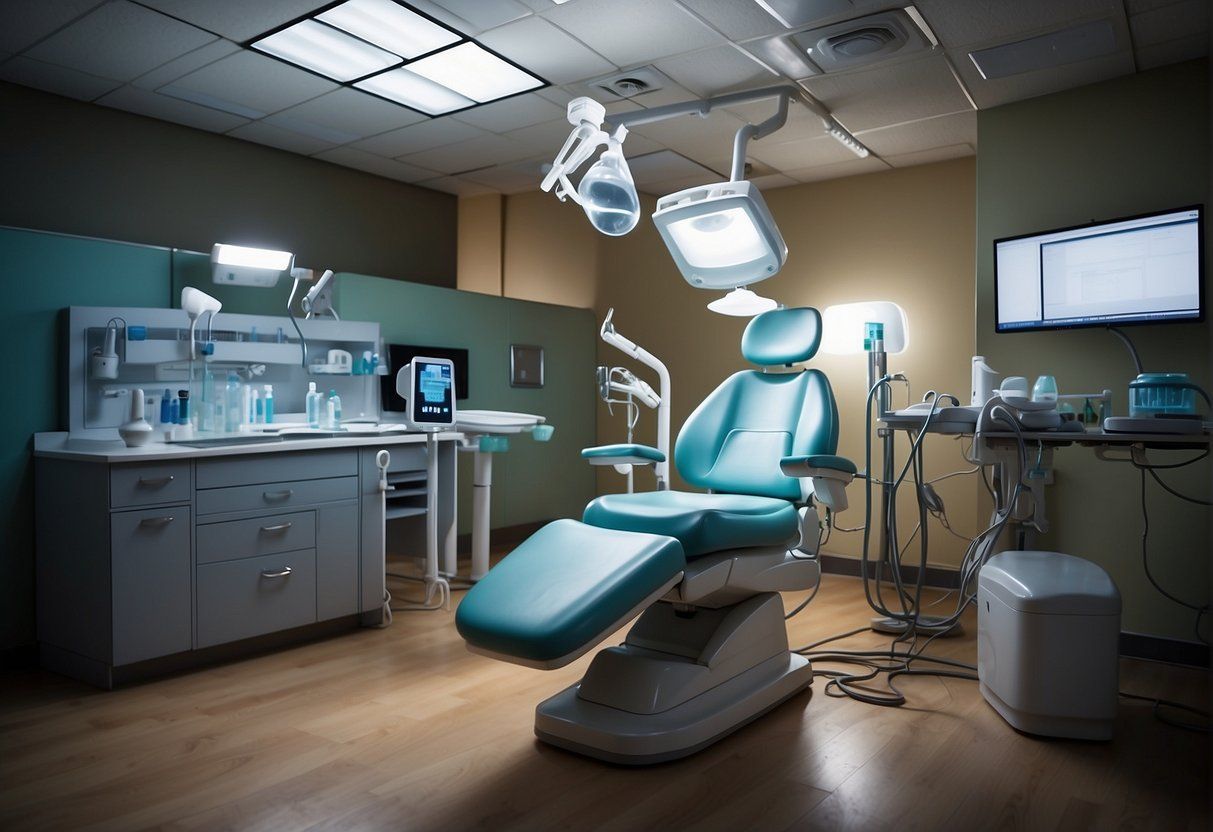
Emergency dental services are critical for addressing immediate pain, preventing further damage, and ensuring oral health is restored swiftly. Such services range from extractions to intricate root canal treatments.
Emergency Tooth Extractions
Emergency tooth extractions are performed when a tooth is too damaged or decayed to be saved. This procedure aims to alleviate pain and prevent the spread of infection. Indications for extraction include severe tooth decay, impacted wisdom teeth, and teeth broken beyond repair.
Root Canal Therapy
Root canal therapy is a treatment option for infected or inflamed pulp, often caused by deep decay or a crack in the tooth. The procedure involves removing the damaged pulp, cleaning the inner canals, and sealing the tooth, which can provide relief from toothache and save a tooth from extraction.
Repairing Broken or Cracked Teeth
Repairing damaged teeth, such as those that are broken or cracked, is essential to prevent further injury or infection. Treatments may include:
- Dental bonding , using a composite resin to repair minor cracks and chips.
- Crowns , which cap and protect a tooth with significant damage.
Treating Dental Abscesses
A dental abscess, which is a pocket of pus caused by a bacterial infection, can lead to severe discomfort. Treating an abscess typically involves drainage followed by antibiotics to eliminate the infection. In some cases, a root canal might be necessary if the abscess is related to tooth decay or a cracked tooth.
Pain Management Strategies
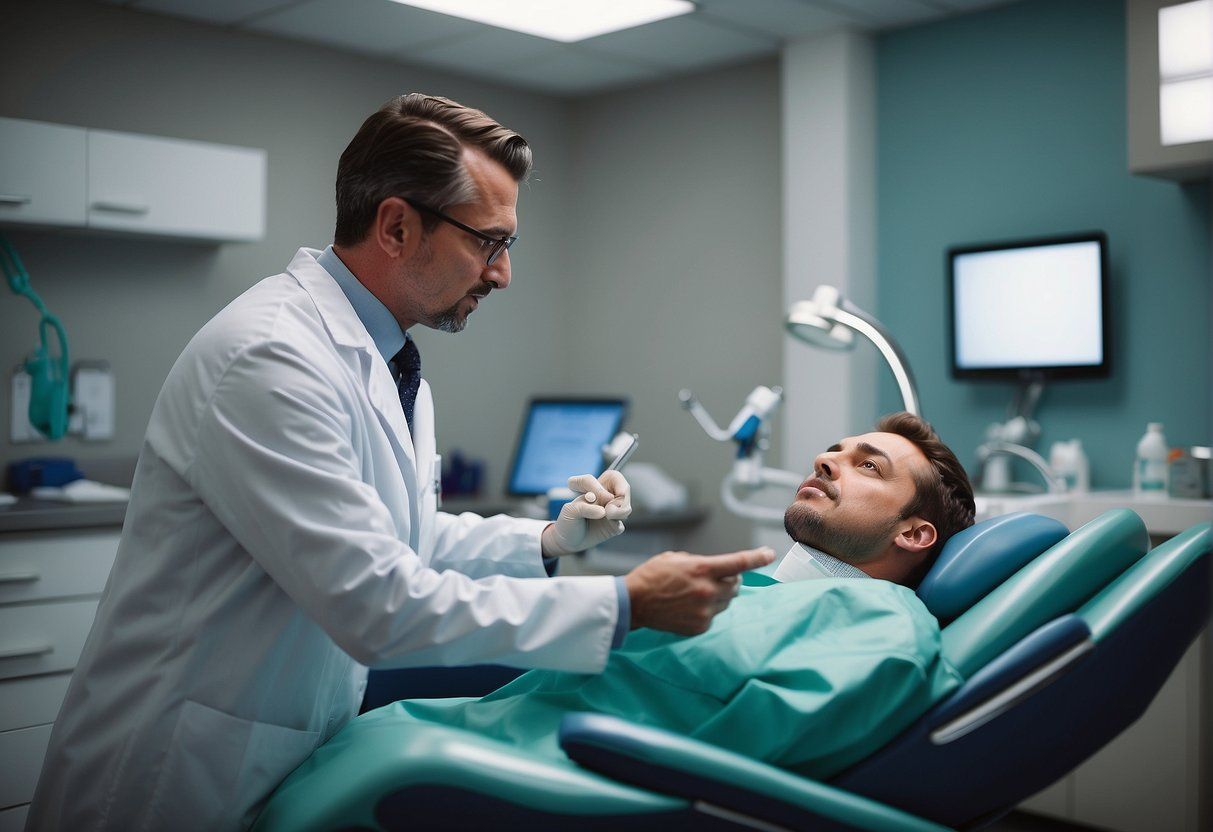
When it comes to managing dental pain, knowing the right strategies can offer significant relief until one can receive professional care. This encompasses both at-home remedies as well as professional treatments.
At-Home Remedies
For immediate toothache relief , patients can employ several strategies to manage pain. Using a cold compress on the outside of the cheek can reduce swelling and numb the discomfort—ideally, 20 minutes on and 20 minutes off. Over-the-counter (OTC) pain relievers such as ibuprofen can also alleviate severe tooth pain . Additionally, rinsing with warm salt water may help by acting as a cleansing agent and reducing inflammation.
- Cold compress : Apply for 20 minutes, remove for 20 minutes, repeat as needed.
- Pain relievers : Ibuprofen or acetaminophen according to package directions.
- Saltwater rinse : Dissolve 1/2 teaspoon of salt in 1 cup of warm water, swish for 30 seconds, spit out.
Professional Pain Relief Options
When at-home methods are insufficient, dental professional s can provide stronger pain relief options. They may prescribe antibiotics if an infection is the cause of the toothache, which not only helps with the pain but also prevents further complications. In cases where OTC medications do not suffice, dentists can prescribe more potent prescription painkillers. It’s critical for patients to follow the dentist’s dosage instructions to avoid potential side effects or complications.
- Antibiotics : Prescribed when an infection is present, take as directed.
- Prescription painkillers : For severe cases, follow the dentist’s instructions carefully.
It is essential for individuals experiencing tooth pain to consult with a dental professional for a diagnosis and appropriate treatment.
Emergency Dental Care Procedures
Emergency dental care procedures are focused interventions to address immediate oral health issues. They range from examinations to intricate restorative work , and are pivotal in treating pain, infection, and trauma swiftly to prevent further dental complications.
Dental Exams and X-Rays
When a patient presents with a dental emergency, the first step is usually a dental exam . During this exam, the dentist assesses the patient’s oral health to identify the cause of discomfort or pain. X-rays may be taken to gain a clearer view of the internal structure of the teeth and jaw.
- Dental Exam : Inspection of oral cavity for signs of trauma, infection, and other abnormalities.
- X-rays : Radiographic images that help detect hidden dental issues not visible to the naked eye.
Temporary and Permanent Fillings
After identifying a cavity or a damaged filling, the dentist may opt for a temporary filling . This is a short-term solution to alleviate pain and prevent further damage until a permanent filling or another corrective procedure can be undertaken.
- Temporary Filling : Applied to protect the tooth and minimize sensitivity until permanent treatment.
- Permanent Filling : Restores the tooth’s integrity and function and is designed to last for many years.
Dental Crowns and Caps
Patients with significantly damaged teeth may require dental crowns or caps . These are custom-fitted over the remaining part of the tooth to restore its shape, strength, and appearance.
- Dental Crown : A cap that completely covers a damaged tooth.
- Procedure : Involves reshaping the tooth, taking an impression, and placing a temporary crown while the permanent one is being created.
Preparing for Your Emergency Dental Visit
When facing a dental emergency, it is important to be well-prepared for the visit to ensure quick and efficient care. The preparation includes knowing what documents and information to bring and setting realistic expectations for the visit.
What to Bring
Personal Identification and Dental Records: Carry a valid form of personal identification, such as a driver’s license or state ID. If possible, bring any recent dental records or x-rays to provide the emergency dentist with a clear picture of your dental history.
- Insurance Information: Make sure to have your dental insurance card with you. In absence of insurance, check if the dentist near you provides alternative payment options or plans.
- List of Medications: Present a list of any medications you are currently taking, including dosages, as this might affect your dental treatment.
- Payment Method: Although some emergency dentists may bill you later, be prepared with a payment method for immediate costs associated with the emergency dental services rendered.
What to Expect
Assessment and Triage: On arrival, patients can expect to undergo an initial assessment to triage the severity of their dental emergency. Emergency dental services prioritize patients based on their immediate needs.
- Waiting Times: While emergency dentists aim to schedule appointments promptly, there may be a wait, especially for walk-in patients. Same-day appointments are often available, but it is advisable to call ahead to reduce waiting time.
- Treatment Plan: After evaluation, the emergency dentist will explain the situation and discuss a treatment plan, including any immediate procedures necessary to alleviate pain or address the emergency.
It is important for patients to be transparent and communicative with the emergency dental service team to facilitate the best care.
Follow-Up Care and Recovery
Following emergency dental treatment, the success of the recovery often depends on diligent follow-up care. Patients must follow post-procedure guidelines closely and monitor the healing process to ensure proper recovery from urgent dental care.
Post-Procedure Guidelines
After receiving emergency dental treatment, patients are typically given a specific set of instructions tailored to their procedure. It is crucial they adhere to these to minimize complications:
- Medication : Take any prescribed antibiotics or pain relievers as directed to prevent infection and manage discomfort.
- Diet : Consume soft foods and avoid hot or cold beverages initially. Chew on the side opposite the treatment site.
- Oral Hygiene : Gently rinse with saltwater after meals to keep the area clean. Brush and floss carefully, avoiding the affected area if advised.
Monitoring the Healing Process
It is essential for individuals who have undergone urgent dental care to keep track of their recovery:
- Pain Levels : Mild to moderate discomfort may be normal. However, increasing or severe pain may indicate a complication and should prompt a follow-up visit.
- Swelling : Some swelling is expected, but it should progressively decrease. Persistent or worsening swelling could signify an infection.
- Follow-Up Visits : Attend all scheduled follow-up appointments so the dentist can assess the healing process and address any concerns.
Options for Financing Emergency Dental Services
When an individual is faced with the immediate need for dental care, understanding the financing options available for emergency dental services is crucial. These can vary significantly in terms of coverage, costs, and payment flexibility.
Insurance Coverage
Most dental insurance plans offer some level of coverage for emergency dental care services. These services can often be distinguished from routine care due to the urgency and necessity of treatment. Patients should review their policy specifics, including:
- Annual maximums: The cap on what the insurance will pay within one year.
- Deductibles: The out-of-pocket cost before insurance coverage starts.
- Percentage of coverage: Determines the split of costs between the insurance provider and the insured for different types of procedures.
- Network restrictions: Identifies if services are only covered at in-network providers.
One should, however, verify coverage details immediately, as some procedures may require pre-authorization to ensure eligibility for benefits.
Dental Savings Plans
Dental savings plans are a different financial arrangement designed to provide savings on emergency dental care. They are membership-based services where patients pay an annual fee in exchange for discounted rates on dental procedures from participating providers. Advantages of dental savings plans include:
- No annual limits: Offers flexibility in receiving various dental services throughout the year.
- No approvals needed: Eliminates the waiting period for treatment, crucial for emergency dental care needs.
- Wide range of coverage: Many plans offer discounts on a variety of services including emergency procedures.
Patients must ensure the dental savings plan is accepted by a provider capable of delivering the necessary emergency services. It’s also important to compare discounts against the membership fee to ensure cost-effectiveness.
Special Considerations
In emergency dentistry, the needs of specific patient groups require tailored care approaches. These groups often have unique dental structures and potential risks that necessitate special attention and treatment protocols.
Pediatric Emergency Dentistry
Children may experience trauma to their teeth during play or sports. A family dentist should be equipped to handle pediatric dental emergencies with a gentle approach that alleviates fear. Procedures often involve:
- Conservation of baby teeth : important for maintaining proper spacing for permanent teeth.
- Sedation techniques: adapted for children’s safety and comfort.
Pediatric patients may need specialized care due to the developing nature of their teeth and jaws.
Emergency Dentistry for Orthodontic Patients
Patients with braces require special consideration in dental emergencies. Treatment takes into account:
- Bracket repair: prioritizing the reattachment of dislodged components.
- Wire issues: managing broken or poking wires that can cause tissue trauma.
Those with orthodontic appliances need urgent care that integrates the maintenance of their orthodontic treatment progress.
Innovations in Emergency Dentistry
Emergency dentistry is rapidly evolving with new technology and methods to enhance patient care. Significant progress in remote consultation and advanced equipment has improved the delivery of immediate dental care, especially for patients experiencing toothaches and other dental emergencies.
Teledentistry
Teledentistry has emerged as a crucial innovation for providing immediate dental consultations. Through teledentistry, patients can receive a preliminary diagnosis for urgent dental issues, such as toothaches, before visiting a 24-hour emergency dentist . This remote service utilizes video calls, smartphones, and specialized apps to facilitate these consultations, allowing for timely advice and treatment plans.
- Accessibility: Enables patients to consult with a dentist regardless of their location.
- Cost-Effective: May reduce the need for an in-office visit, saving time and money.
- Preventive Care: Allows for quick response to dental emergencies, potentially preventing conditions from worsening.
Advancements in Dental Technology
The field of dental technology has seen significant advancements that is transforming emergency dental care. From enhanced imaging systems to the latest in treatment equipment, these technologies offer more precise diagnoses and better patient outcomes.
- Imaging Technology: 3D imaging and digital X-rays provide clear, detailed views of dental structures, aiding in quick and accurate diagnosis.
- Digital Scanners: Replace traditional impressions, offering a more comfortable experience for the patient and immediate data for the dentist.
- Materials and Techniques: Innovative materials for restorations and minimally invasive techniques contribute to more efficient emergency care and faster recovery times.
The integration of these advancements is streamlining the emergency dentistry experience, ensuring patients receive prompt attention and effective treatment for dental emergencies.
Frequently Asked Questions
Emergency dental services are critical for addressing urgent oral health issues. The following questions address common concerns regarding emergency dentistry.
What should I do if I need immediate dental attention but I don’t have dental insurance?
Individuals without dental insurance should seek out clinics that offer services on a sliding scale based on income or those that provide payment plans. Some dental offices also accept credit card payments or offer financing options for emergency treatments.
Can I receive emergency dental care in Las Vegas if I am covered by Medicaid?
Many dental providers in Las Vegas accept Medicaid for emergency dental services. Patients should verify with the provider beforehand to ensure their coverage is accepted and understand any potential out-of-pocket costs.
Where can I find a dentist who offers 24-hour emergency dental services?
One can find dentists offering 24-hour emergency services through online directories, dental society websites, or referrals from local hospitals. Some dental clinics advertise their after-hours services explicitly for patients in need of immediate care.
How can I get an emergency tooth extraction, and what should I expect?
An emergency tooth extraction can usually be obtained by contacting an emergency dentist or visiting an urgent care dental clinic. Patients should expect to undergo an assessment followed by the extraction procedure, and they will receive aftercare instructions to manage recovery.
Are there any emergency dental clinics available in North Las Vegas?
North Las Vegas has several dental care providers who offer emergency services. Patients should search for local emergency clinics or contact their regular dentist for recommendations.
What are some options for handling severe dental pain in the middle of the night?
For immediate relief from severe dental pain, one can take over-the-counter pain relievers, apply a cold compress, use clove oil on the affected area, or rinse the mouth with saltwater. However, it is crucial to consult with an emergency dentist as soon as possible for proper care.…
